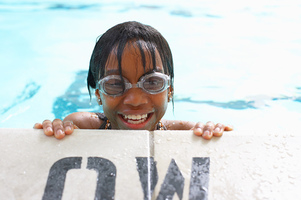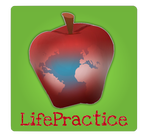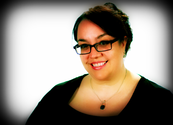
I’m so proud of the teachers who are learning and honing the skills it takes to run a PBL classroom full-time. Much of PBL antithetical to most of what we’re taught in our pre-service programs to do with students in the classroom. It’s not easy to unlearn so much of what we’ve been taught to do, even if we know it’s probably not working as well as we hoped it would.
Do you remember your first few swimming lessons? Remember letting go of the side of the pool and thrashing around like a madman? It was hard. It was scary. But it was essential to learning how to swim. And like me, you may have gotten a snoot full of water more than once! But we kept at it and now every time we get near the water, it’s no longer a life-threatening venture.
It is indeed very scary to let go of the safety rope of “what we’ve always done,” and reach out to the unknown. It takes guts to open our minds toward PBL; it takes grit to forge our first units; and it takes true passion to hone the new, unfamiliar skills into something we just do.
After having run my own PBL classroom, learning the ropes pretty much alone, then figuring out how to teach co-teachers to shift toward PBL, and now, having the opportunity to travel across the nation and to other countries helping more educators shift to learning by doing in their classroom, I’m more energetic than ever!
And to those of you just starting to independently work on your kicks, your strokes, your breathing, I applaud you. It’s not easy. So to help you along the process, I share the following list of 9 questions that every PBL’er asks him/herself along each school year’s journey to stay in top-performance shape.
The list is something to refer to at nearly any point in the PBL process. It can be reviewed in the middle of planning a unit. Or while reflecting after final presentations and post-project wrap-up regarding how the unit went. Or it can be used as a great way to push yourself harder mid-stroke. But the magic of the list is not in the questions. It’s in the answers and solutions you create!
But caution: just as a beginning swimmer needs to concentrate on fundamentals, the beginning PBL’er can’t perfect everything at once. In fact, I wonder if we can ever consider ourselves perfect! This is a continuous-reminder self-check list to help keep you on the path. If the list seems overwhelming, it’s ok. Pick one question, one topic to improve during the next unit. You have time.
You’ll be fine. Just don’t ever stop learning. Keep moving toward improvement. And I hope these questions will help you create answers that propel you and your learners forward!
Do you remember your first few swimming lessons? Remember letting go of the side of the pool and thrashing around like a madman? It was hard. It was scary. But it was essential to learning how to swim. And like me, you may have gotten a snoot full of water more than once! But we kept at it and now every time we get near the water, it’s no longer a life-threatening venture.
It is indeed very scary to let go of the safety rope of “what we’ve always done,” and reach out to the unknown. It takes guts to open our minds toward PBL; it takes grit to forge our first units; and it takes true passion to hone the new, unfamiliar skills into something we just do.
After having run my own PBL classroom, learning the ropes pretty much alone, then figuring out how to teach co-teachers to shift toward PBL, and now, having the opportunity to travel across the nation and to other countries helping more educators shift to learning by doing in their classroom, I’m more energetic than ever!
And to those of you just starting to independently work on your kicks, your strokes, your breathing, I applaud you. It’s not easy. So to help you along the process, I share the following list of 9 questions that every PBL’er asks him/herself along each school year’s journey to stay in top-performance shape.
The list is something to refer to at nearly any point in the PBL process. It can be reviewed in the middle of planning a unit. Or while reflecting after final presentations and post-project wrap-up regarding how the unit went. Or it can be used as a great way to push yourself harder mid-stroke. But the magic of the list is not in the questions. It’s in the answers and solutions you create!
But caution: just as a beginning swimmer needs to concentrate on fundamentals, the beginning PBL’er can’t perfect everything at once. In fact, I wonder if we can ever consider ourselves perfect! This is a continuous-reminder self-check list to help keep you on the path. If the list seems overwhelming, it’s ok. Pick one question, one topic to improve during the next unit. You have time.
You’ll be fine. Just don’t ever stop learning. Keep moving toward improvement. And I hope these questions will help you create answers that propel you and your learners forward!
- Is this truly PBL or are we just “doing projects?” Here’s a post to help you figure that out.
- How can I do less planning, directing, and teaching? How can I help my kids take more charge over their own learning design?
- How can we get away from technology as a “wow!” factor and use it more as just what we do?
- How can I get better with capturing the deeper and broader (side-dish) learning beyond just the main project goals?
- How can I get kids into the community more?
- How can I get the community, including the media, into our school more?
- How can I connect our next project with older or younger kids? Kids outside of the state? Kids in other countries?
- How can I connect our next project with more targeted content in my own field, as well as others?
- How can I get my kids to start creating their own questions? their own projects? their own passions?


 RSS Feed
RSS Feed
